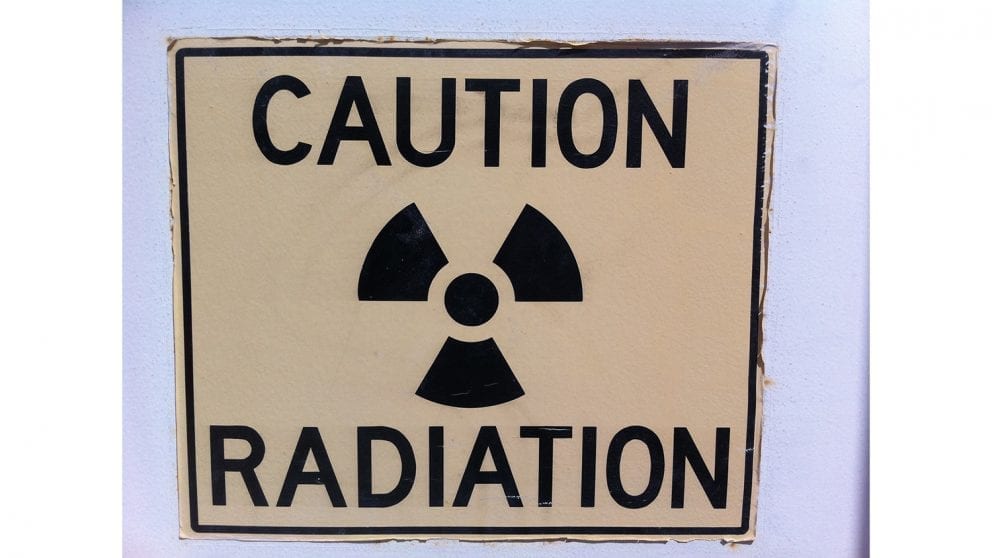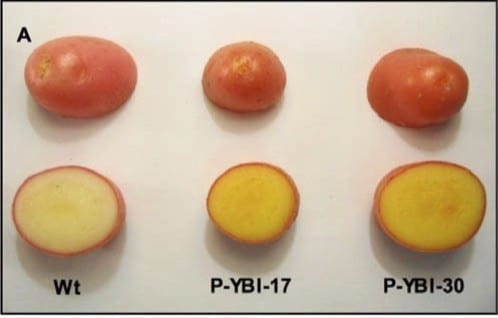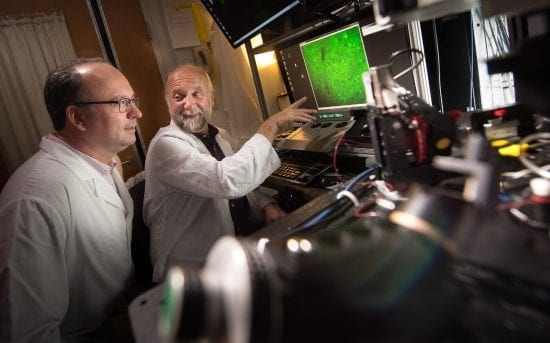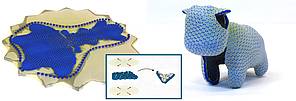
A new technique allows researchers to characterize nuclear material that was in a location even after the nuclear material has been removed – a finding that has significant implications for nuclear nonproliferation and security applications.
“Basically, we can see nuclear material that is no longer there,” says Robert Hayes, lead author of paper describing the work and an associate professor of nuclear engineering at North Carolina State University. “For example, we could identify and characterize a dirty bomb based on samples taken from a room the bomb was in a year ago.
“This is a valuable tool for emergency responders, nuclear nonproliferation authorities and forensics, because it allows us to get a rough snapshot of the size of a radiation source, where it was located, how radioactive it is, and what type of radioactive material it is,” Hayes says.
The technique takes advantage of the fact that radioactive material changes the arrangement of valence electrons – or outer electrons – in insulator materials, such as brick, porcelain, glass – even hard candy. Basically, radiation displaces electrons at defect sites in the crystalline structure of these materials.
By taking samples of multiple materials in a room, applying conventional radiation dosimetry techniques, and evaluating how the electrons at those defect sites are organized, researchers can determine the presence and strength of any nuclear materials that were in that room.
“If the samples were taken at regular intervals in a grid pattern, the relative radiation dose profile can be used to triangulate where in the room the source was located, in three dimensions,” Hayes says. “It can also provide a very rough idea of the physical size of the source, but that depends on various factors, such as how close the source was to the materials being sampled.”
By taking a core sample of the insulating material, and measuring the radiation dose at various depths in the material, researches can also ascertain what type of radiation source was present. This is possible because different radioactive materials have characteristic distributions of gamma rays, X-rays, etc., and each type of energy penetrates materials with different strength.
“This is not extremely precise, but it does allow us to answer important questions. For example, distinguishing between different kinds of nuclear material such as naturally occurring, medical, industrial, and ‘special’ nuclear materials – the latter being used for nuclear weapons,” Hayes says.
“This is a proof of concept,” Hayes says. “We’re now focused on exploring its detection limitations along with spatial and energy resolution, and how to make use of this approach moving forward.
“But this is a big deal for nuclear nonproliferation efforts, because it means you can’t handle nuclear material in secret anymore,” Hayes adds. “It means the world is now densely blanketed by low-resolution integrating gamma-ray spectrometers, so we can always go back and measure what was present. There’s no hiding.”
Learn more: New Technique ‘Sees’ Radioactive Material Even After It’s Gone
The Latest on: Tracking nuclear material
[google_news title=”” keyword=”tracking nuclear material” num_posts=”10″ blurb_length=”0″ show_thumb=”left”]- Explainer-How Might a US-Saudi Civil Nuclear Deal Work?on May 18, 2024 at 3:03 am
Below is a description of the key issues involved in a U.S.-Saudi civil nuclear deal, what risks and benefits it may offer the United States and Saudi Arabia, and how it fits within U.S. efforts to ...
- All articles byon May 17, 2024 at 9:17 pm
The layered system of governance for nuclear materials generates huge volumes of data across multiple stakeholders in multiple jurisdictions. Now, blockchain technology may help to address a major ...
- 150 employees added to Palisades amid reopening effortson May 16, 2024 at 2:24 pm
The plant now has more than 360 employees, Holtec said in a Tuesday release, 150 of which started working at the plant after it started working to reopen. Almost half are union members, and Holtec has ...
- Behind the Scenes: One of Our H-Bombs Is Missingon May 16, 2024 at 5:50 am
BoPaul Media Worldwide and Crew Neck Productions have teamed up for the documentary thriller One of Our H-Bombs Is Missing, currently in preproduction. It tells a story that began decades ago with a ...
- Increase in UN Nuclear Inspections in Iran Can’t Solve Deepening Mistruston May 15, 2024 at 5:02 am
The United Nations’ atomic watchdog reported that despite the growing presence of inspectors in Iran last year, its understanding of the Persian Gulf nation’s nuclear ambitions deteriorated amid ...
- Nuclear Weapons at Any Price? Congress Should Say Noon May 14, 2024 at 8:44 am
Costs are skyrocketing to modernize the U.S. nuclear arsenal. Instead of turning a blind eye, Congress should demand fiscal oversight and make hard decisions balancing costs with deterrence ...
- Senators eye bills seeking to ban nuclear energy, marijuana test for May sessionon May 10, 2024 at 5:00 pm
Chris Barnett's Bill 57-37, which would fast-track the appeals process for protests ... small modular reactors, or nuclear microreactors. It adds that no radioactive material shall be disposed of on ...
- Few tenure-track jobs for engineering Ph.D.s, study findson May 8, 2024 at 9:36 am
A study finds that most engineering Ph.D. graduates will never secure a tenure-track faculty position. Over the past 50 years, the number of full-time faculty positions in US universities has steadily ...
- Few tenure-track jobs for engineering PhDson May 6, 2024 at 4:59 pm
nuclear engineering, metallurgical and materials, and environmental engineering. Previous research has found that nearly 80% of tenure-track engineering faculty members hired during 2011–2020 were ...
- 'Better than graphene' material development may improve implantable technologyon May 6, 2024 at 7:01 am
Move over, graphene. There's a new, improved two-dimensional material in the lab. Borophene, the atomically thin version of boron first synthesized in 2015, is more conductive, thinner, lighter, ...
via Google News and Bing News











